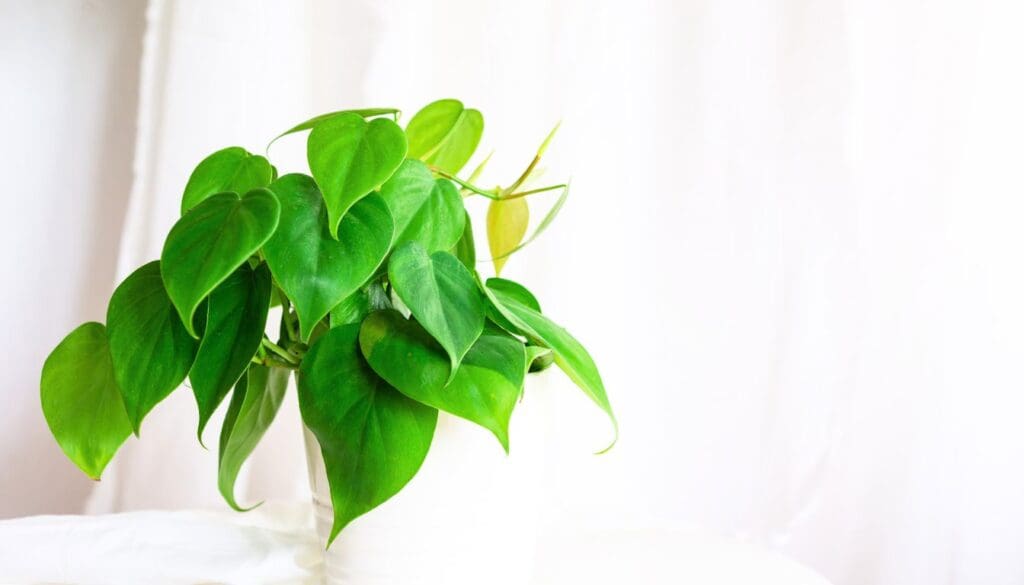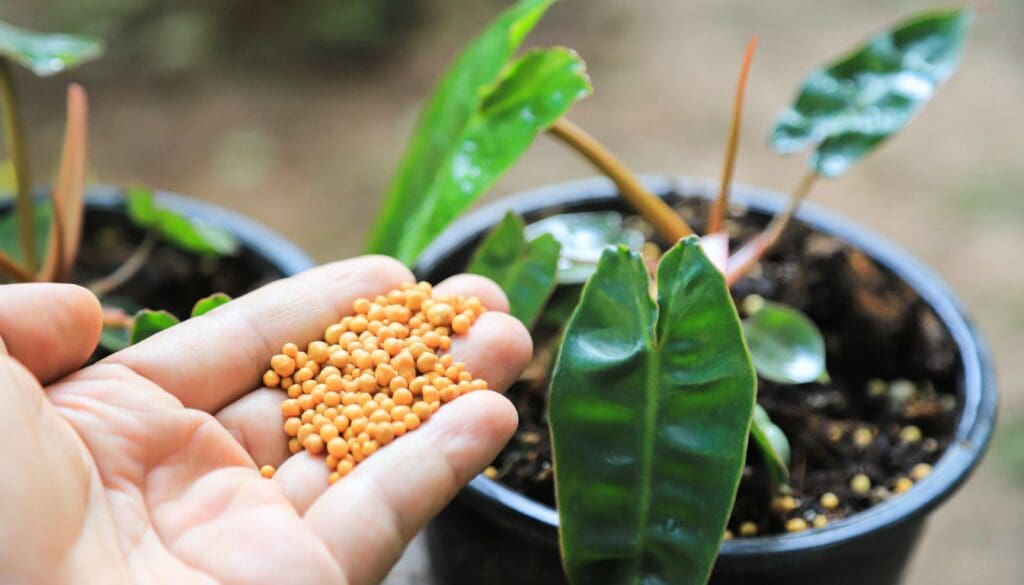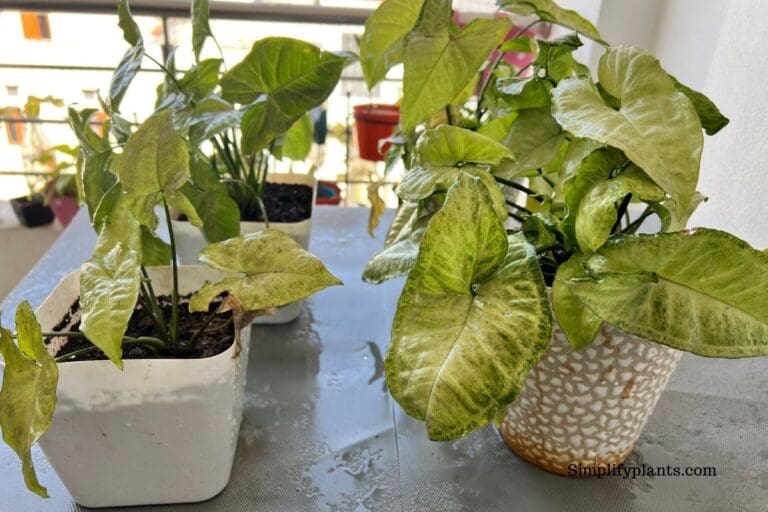Leggy Philodendron? Why & How To Prune
Philodendrons are tropical plants with many species and have gained popularity because of their unique leaves. The leaves of philodendrons come in different shapes and colors.
However, sometimes philodendrons can get leggy due to various reasons, which can destroy your aesthetics. Let’s understand why your philodendron is leggy and how to fix it.
In general, Low lighting conditions and lack of pruning will lead to a leggy philodendron. Philodendrons are fast-growing plants that can become leggy if proper living conditions are not provided. Dropping of leaves and overfertilization of the plant can also make your plant leggy.
Like all houseplants, philodendrons require proper light, sufficient water and fertilizer, and some pruning to stay in shape. However, it becomes leggy instead of growing bushy when the plant doesn’t get proper care and living conditions.
The good news is that you can bring your leggy philodendron back to health, as it is never too late with a leggy plant.
You need to find the cause of the legginess and decide the treatment to fix your philodendron.

Please note: Simplify Plants is reader-supported. Some links in the post are affiliate links and I get a commission from purchases made through links in the post.
Why is my philodendron leggy?
Leggy philodendrons grow long and weak stems, and their leaves have 10-15 inches of space in between. A lack of energy and nutrients makes the plant grow leggy and slows down new growth.
Low light can be the main reason behind the leggy growth of your philodendron. The stems or vines stretch towards a light source due to lack of light, making them long and spindly.
Other than this, irregular pruning and lack of fertilization can also lead to legginess in your philodendron.
Philodendrons are fast-growing plants that don’t grow leggy quickly. They grow leggy when unfavorable conditions persist for too long.
If your philodendron doesn’t receive enough light, it can become bald over time as it requires light to grow its leaves, produce energy, and photosynthesize.
Also, if you are over-feeding your philodendron with excess fertilizer and expecting it to grow faster, it will not be suitable for your plant. It will proliferate but, in the process, will become tall and weak.
Therefore, you should never overdo anything, as it will only harm your philodendron. Instead of making your philodendron bushy and healthy, it will make the plant look odd and leggy.
How to fix leggy philodendron?
You can fix a leggy philodendron by caring for the plant. If you see leggy growth on your philodendron, you must act fast and find the reason behind the legginess.
Your philodendron can become healthy if you provide proper nutrients, light, and water.
If you want to fix a leggy philodendron, you can do it by taking care of the following points:
- Pruning
- Proper lighting
- Sufficient fertilizer
- Maintaining the right temperature
- Propagating the plant
Pruning
Pruning is essential for all houseplants as it keeps the plant in shape and helps you maintain the desired length.
Philodendrons will look uneven and odd when they grow leggy. The initial step of controlling this long growth and encouraging new and healthy growth is through pruning.
You must prune the long stems that stretch too long as those stems will not become healthy again. This will make space for new growth in the plant.
If you notice leafless stems, prune them, as they won’t grow new leaves.
Prune the philodendron till you get rid of all the leggy parts. However, you should do it slowly, as pruning too much at once can shock the plant. So you can prune 20% at a time, to begin with.
Pruning can also help the soil and roots to function better by reducing the load on them.
Don’t forget to clean the pruners or shears before using them to prevent contamination on your philodendron.
Also, use gloves or wash your hands thoroughly after touching the philodendron, as the plant’s sap is toxic and can cause skin irritation.
Proper lighting

Pruning will help you eliminate the leggy parts, but your philodendron will become leggy again if you don’t improve the lighting.
First of all, ensure that the philodendron is becoming leggy due to a lack of light. The leaves of the plant can help you to determine this. If the leaves are pale and yellow, it indicates that the lighting is the issue.
You must keep your philodendron under bright and indirect light for at least 6-8 hours for better and healthier growth.
You can place your philodendron in a room that is full of windows and gets ample indirect sunlight. Or, you can place it near a south, east, or west-facing window that gets sufficient indirect light.
The philodendron requires light on all sides, so you should rotate the plant to 45 degrees every few days to provide light on all sides instead of only one side.
If the philodendron doesn’t get light on all sides, it will have leggy growth on the sides that don’t get light. These stems will stretch too long in search of light and will become leggy.
If your philodendron is placed in a low light spot, relocate it to a brighter spot and rotate it so that the light gets evenly distributed. Keep the plant under shade or use sheer curtains to protect it from direct sunlight.
Keep your philodendron away from the window when the temperatures go low. You can use artificial lights in winter to cope up with the low light.
Also read: What Kind Of Light Does A Philodendron Need? (Light Requirements)
Sufficient fertilizer
Philodendrons can grow leggy if they get excess fertilizer or no fertilizer at all.
Although philodendrons don’t depend on fertilizers for their growth, they need them because the soil cannot provide the required nutrition to the plant.
The philodendron can become weak if you don’t give it enough fertilizers.
If you don’t fertilize the philodendron with the right dose during the growing season, the plant will become leggy due to a lack of nutrients, and the growth will slow down.
You must feed your philodendron once a month during the growing season with the right amount of fertilizer. You can use an organic or all-purpose fertilizer.
Before feeding your philodendron, dilute the prescribed dose of fertilizer to make it half-strength. The total dose might be excessive for your philodendron.
You can add compost to the soil, and every time you water the philodendron, nutrients will get released that the plant can absorb.
You need to reduce the fertilizing in the fall after fertilizing properly in summer and spring. Stop fertilizing completely in winter.
Winter is the dormant season, and you should let your philodendron rest in winter. The growth of the philodendron slows down in winter, and it doesn’t require any fertilizer for that.
If you fertilize your philodendron with a well-balanced 20:20:20 fertilizer, the plant will have bushy and healthy growth instead of leggy growth.
Also read: What Kind Of Fertilizer For Philodendron? (Best Fertilizer+Fertilizer Ratio)

Maintain the right temperature.
Philodendrons prefer warm temperatures that are similar to their native lands. Philodendrons come from tropical rainforests, where they get high temperatures and humidity levels.
If the temperature goes below 50°F, the plant will start having problems.
The temperature levels go down in winter, and that is when you need to increase the temperature to keep your philodendron healthy.
You can use a heat pump to manipulate the low-temperature levels. You can place the plant near a fireplace or furnace to increase its temperature. However, don’t keep it too close, as that will burn the leaves.
Place the philodendron outdoors during the daytime in winter or if you live in a colder region to expose it to better lighting conditions.
If you experience high-temperature levels in your area, you can mist your philodendron or use a humidifier to reduce the excess heat.
Propagate the philodendron
When you prune your philodendron, throwing the cuttings away can feel bad, so instead of throwing the healthy cuttings away, you can propagate them.
Regarding the leggy cuttings, you can propagate to make your current philodendron bushier.
Take the cutting just below a node. Check the stem and cut the nodes that you see on the stem. This will allow leaves and new stems to grow from the plant.
Then you need to put the cuttings in water or soil, and once the roots come out, you need to plant those with the existing philodendron.
It can take a lot of time for the roots to grow and the stems to grow new leaves. However, once the roots and leaves come out, the plant will get bushier.
Take proper care of your philodendron so that the plant remains healthy and doesn’t become leggy again. You should not expect too much growth in winter as the growth slows down during this time.
You must be patient in this process to see your philodendron thrive and flourish. By propagating the cuttings, you can cover the bald areas and make your philodendron look bushy.
Propagate your philodendron after watering it, as that would give the plant a good chance to absorb some moisture.
How to prune a leggy philodendron?
It is easy to fix a leggy philodendron by pruning it. You can prune the leggy stems. The tools that are required for proper pruning are:
- Pruning shears
- Gloves
- Watering can
- Fertilizer or compost
- Hand towel
Pruning boosts the growth of the plants by activating the growth hormones. You must trim your philodendron whenever you see overgrowth or want to keep the plant in shape. You can prune your philodendron the way you want.
It is equally essential to prune the stems that have started thinning out. You will notice a node from where the stems have started getting thin and an empty node. You need to cut below the large leaf that you want to keep on your philodendron.
You can prune the stems up to the length you want with the help of pruners or shears.
If you want to propagate, cut below the node between two leaves and let new roots grow from there.
The stem of your philodendron will grow new leaves from the sides opposite to the side where you have made the cutting.
Prune the bushier parts of your philodendron and plant those cuttings on the bald sides of the plant to make it look bushier.
Water the philodendron thoroughly after pruning it to keep the soil moist and encourage new growth. This will also reduce the stress that can occur due to pruning.
You can take many cuttings from your philodendron but don’t prune too much as the plant will get stressed. Replant the cuttings with the existing plant to make the plant look bushy.
Fertilize the philodendron with an organic fertilizer after diluting it and sterilize the pruners to prevent any contamination.
How do you keep a philodendron from getting leggy?
You can prevent philodendron from getting leggy by pruning it at a frequent interval. You must prune all the long and thin stems whenever you spot them on the plant.
Dispose of these extra stems. Find the spot where the growth starts getting smaller or thinner and cut from that spot. Pruning will promote new growth by boosting the growth hormone and reducing the pressure from the soil.
You can cut above the nodes of the stem, propagate these in water, and replant them in the same pot. This will prevent legginess by making the philodendron bushy.
Let the philodendron be in bright indirect light in the daytime. Rotate it after regular intervals to prevent legginess and promote growth on all sides.
Water the philodendron thoroughly, and don’t let the soil get bone dry, as these plants prefer the soil to remain slightly moist. Water when the soil gets 50-75% dry. You can check the soil’s moistness by putting your finger inside the soil or with the help of a moisture meter.
Don’t repot the philodendron too frequently. It would help if you repotted the philodendron when it is root-bound. This will promote faster and more growth.
Ref: Wikipedia.
Recommended Garden Supplies
| Product Image | Our Recommended Gardening Supplies | Check Offers! |
|---|---|---|
Top Top
Top
Top
Top
Top
Top
Top
Top | rePotme Houseplant and Tropical Classic Potting Soil Mix | Check Offer On Amazon |
 Top
Top
Top
Top
Top
Top
Top
Top | Espoma Organic Indoor Plant Food | Check Offer On Amazon |
 Top
Top
Top
Top
Top
Top
Top
Top | GooingTop LED Grow Light 6000K Full Spectrum Clip Plant Growing Lamp | Check Offer On Amazon |
 Top
Top
Top
Top
Top
Top
Top
Top | Soil Moisture Meter | Check Offer On Amazon |
 Top
Top
Top
Top
Top
Top
Top
Top | Govee Hygrometer Thermometer, Bluetooth Enabled! | Check Offer On Amazon |
 Top
Top | LEVOIT Humidifiers for Large Room(Best For Plants) | Check Offer On Amazon |
 Top
Top
Top
Top
Top
Top
Top
Top | Upgraded DIY Automatic Drip Irrigation Kit, 15 Potted Houseplants Support | Check Offer On Amazon |
 Top
Top
Top
Top
Top
Top
Top
Top | Stainless Steel Heavy Duty Gardening Tool Set | Check Offer On Amazon |
 Top
Top
Top
Top
Top
Top
Top
Top | Bonide Insecticidal Soap | Check Offer On Amazon |
 Top
Top
Top
Top
Top
Top
Top
Top | Bonide 32 oz Spray Neem Oil for Organic Gardening | Check Offer On Amazon |
 Top
Top
Top
Top
Top
Top
Top
Top | Garden Safe Fungicide | Check Offer On Amazon |






